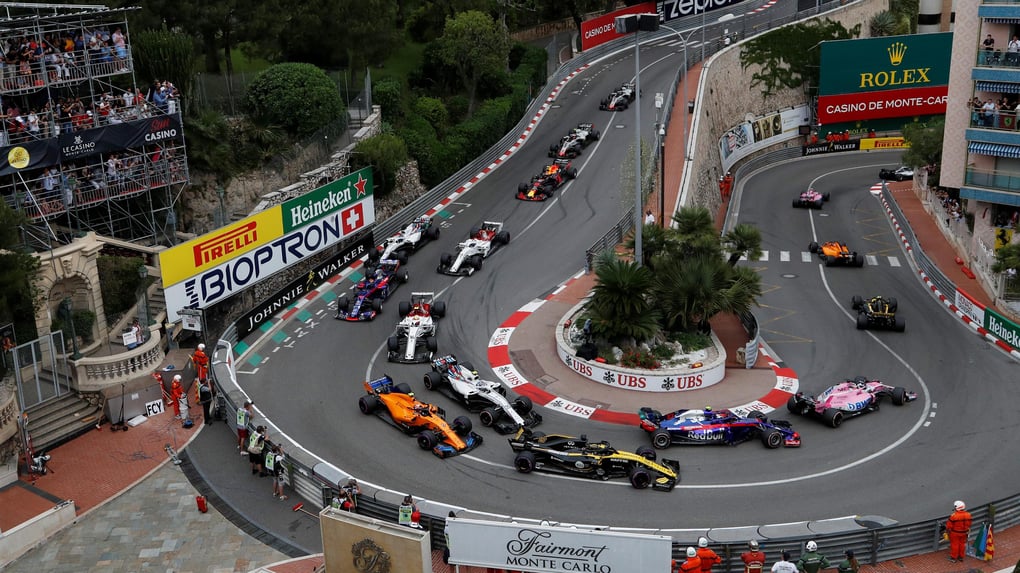Formula 1
The Challenges of Racing on Street Circuits in Formula 1

Racing on a street circuit is one of the most thrilling forms of motorsport, with Formula 1 being no exception. As a premier racing series, Formula 1 travels worldwide to compete on some of the most iconic street circuits, from Monaco to Singapore. However, the sport also presents numerous challenges. Tight corners, narrow roads, bumpy surfaces, and unpredictable weather conditions are just a few of the obstacles drivers must face when racing on a street circuit.
In this article, we will take an in-depth look at the challenges of racing on street circuits in Formula 1, as well as explore why some drivers excel on these tracks. By understanding these aspects, you can gain a better appreciation of the skill and precision it takes to be successful in Formula One.
What is a Street Circuit?
A street circuit is a race track that is laid out on a public road or city street. This type of track is most common in Formula 1 and is used to create exciting and challenging races. Although they differ in design, they usually feature long straights, multiple tight corners, and bumpy surfaces.
The most famous street circuit in Formula 1 is the Monaco Grand Prix, which has been held for over 80 years and is regarded as one of the most prestigious races in the series. Other popular street circuits include the Brazilian Grand Prix, the Mexican Grand Prix and the Singapore Grand Prix.
The Challenges of Racing on Street Circuits
Racing on a street circuit can be much more challenging than a traditional race track. Drivers must navigate tight corners, navigate through crowded streets and deal with the bumps and cracks in the road. Here are some of the biggest challenges of racing on a street circuit.
- Tight Corners: Street circuits are known for their tight corners, which require drivers to have precise control of their cars to make sure they don’t overshoot or under-steer. Drivers must also be aware of the other cars around them to make sure they don’t crash.
- Narrow Roads: Most street circuits feature narrow roads that require drivers to be very careful when overtaking or cornering. The roads can also be very slippery, making it even harder for drivers to maintain control of their cars.
- Bumpy Surfaces: The surfaces of street circuits are often uneven and filled with bumps and potholes. This can cause drivers to lose control of their cars if they don’t adjust their driving accordingly.
- Changing Weather Conditions: Street circuits are often located in cities, which means they can be affected by changing weather conditions such as rain or strong winds. This can make the track slippery and unpredictable, making it difficult for drivers to stay on course.
Why Some Drivers Are Better on Street Circuits
Some drivers tend to excel on street circuits due to a combination of factors, including natural talent, experience, and adaptability. Here are some reasons why certain drivers perform better on these tracks:
- Natural Talent: Some drivers possess an innate ability to navigate the tight corners and narrow roads of street circuits with precision and finesse. This talent allows them to capitalize on opportunities that other drivers may not see or be able to execute.
- Experience: Racing on street circuits requires a unique set of skills and knowledge. Drivers with extensive experience on these tracks have honed their abilities to anticipate challenges and respond effectively, giving them an edge over less experienced competitors.
- Adaptability: Street circuits can present rapidly changing conditions, and the ability to adapt to these changes is crucial. Drivers who can quickly adjust their driving style and strategy to suit the evolving track conditions are more likely to succeed on street circuits.
- Mental Toughness: The demanding nature of street circuits can be mentally exhausting for drivers. Those who can maintain focus and perform under pressure are more likely to excel on these challenging tracks.
How Drivers Prepare for Street Circuits
To prepare for a street circuit, drivers must practice their skills both on and off the track. On the track, they must focus on cornering and braking techniques to ensure they can navigate tight turns safely and efficiently. Off the track, drivers must study the layout of the track and familiarize themselves with the different types of surfaces they may encounter.
Drivers must also be aware of the changing weather conditions and adjust their driving accordingly. For example, wet conditions can make the track slippery and more difficult to navigate. Drivers must be prepared to adapt their driving style if necessary.
Finally, drivers must be aware of the other cars and drivers on the track. They must be prepared to maneuver around slower cars and anticipate the moves of their opponents.
Conclusion
Racing on a street circuit is one of the most challenging forms of motorsport, and Formula 1 drivers must be prepared to face a variety of obstacles. From tight corners and narrow roads to changing weather conditions, drivers must be prepared to use their skills and experience to successfully navigate the track. By understanding the challenges of racing on a street circuit, you can gain a better appreciation of the skill and precision it takes to be successful in Formula One.


